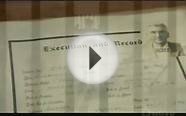 I’ve moved all my money to money-market funds. My plan is to wait for the crash and when things start looking better get back into the market to ride the rebound. Do you think this is a good idea?
I’ve moved all my money to money-market funds. My plan is to wait for the crash and when things start looking better get back into the market to ride the rebound. Do you think this is a good idea?
—Tim H.
If I thought you were able to predict when stocks will crash, when the market will hit bottom and when it will actually recover, then I’d say your plan is masterful, a sure-fire way to avoid losses, capitalize on gains and boost your long-term return. Unfortunately, your chances of doing all that range between zero and none. So I consider your idea a fantasy, not a bona fide plan.
The problem is that while it’s easy to identify market peaks in retrospect, it’s virtually impossible to call market tops in real time. Back in late 1996, for example, when former Federal Reserve chairman Alan Greenspan delivered his famous “irrational exuberance” speech in the midst of the dot-com bubble, some investors interpreted his remarks as a not-so-veiled warning that stock valuations were stretched so thin that the market must be headed for a crash. And it was. Except that the crash didn’t come until more than three years later, a stretch during which stock prices more than doubled.
We could very well be in a similar position today. Yes, the market’s been rocky this year, and investors are understandably concerned about losses in Chinese stocks and the fact that the U.S. market appears to be increasingly driven more by a handful of big tech stocks than a broad-based surge. The fact that stock prices have more than tripled in the past six or so years only adds to investors’ anxiety. But none of this necessarily means that a meltdown is imminent. For all anyone knows, this bull could have a lot farther to run before it runs out of steam. It’s just impossible to tell.
And even if you do somehow manage to get out of the market at the right time, you’ve still got to figure out when to get back in. That’s no easy feat either. For example, the bull market prior to this one peaked in October 2007, after which it began a long decline that left prices 57% lower by the time the market slide ended in early March 2009. But while it’s easy looking back to see that it took almost a year and a half for the market to hit bottom, that wasn’t so obvious to investors who were living through it.
Consider: After peaking in October 2007, stock prices dropped almost 20% over the next five months—at which point they then abruptly rebounded roughly 12% over the next two months. With the benefit of 20/20 hindsight, we know that this was just a mini-rally, a brief respite from the bear market. But investors keen on catching the rebound in stock prices could easily have taken it as a sign that things were, to use your phrase, “looking better” and poured their money back into stocks. If they did, they would have seen stock prices plummet another 50% before bottoming out some 10 months later.
Interesting facts
Additional information



|
5C Case, iphone 5C Wallet CASE - Hipster Let's Go To Neverland Quote Pattern Premium PU Leather Wallet Case Stand Cover with Card Slots Cash Compartment for Apple iphone 5C + CoolGiftCase Stylus Wireless (CoolGiftCase)
|














